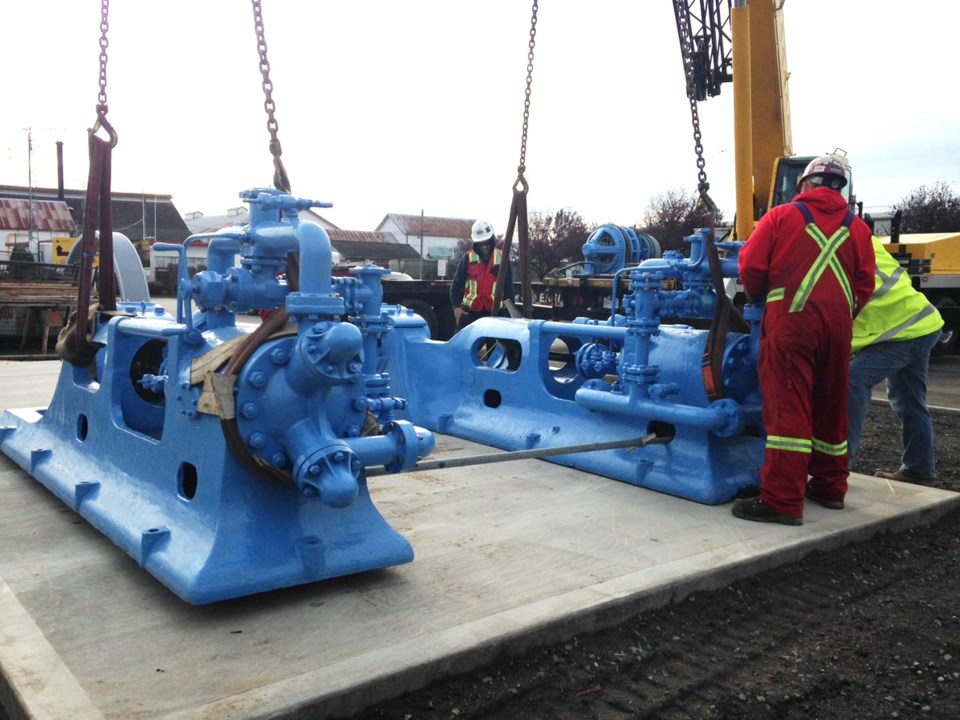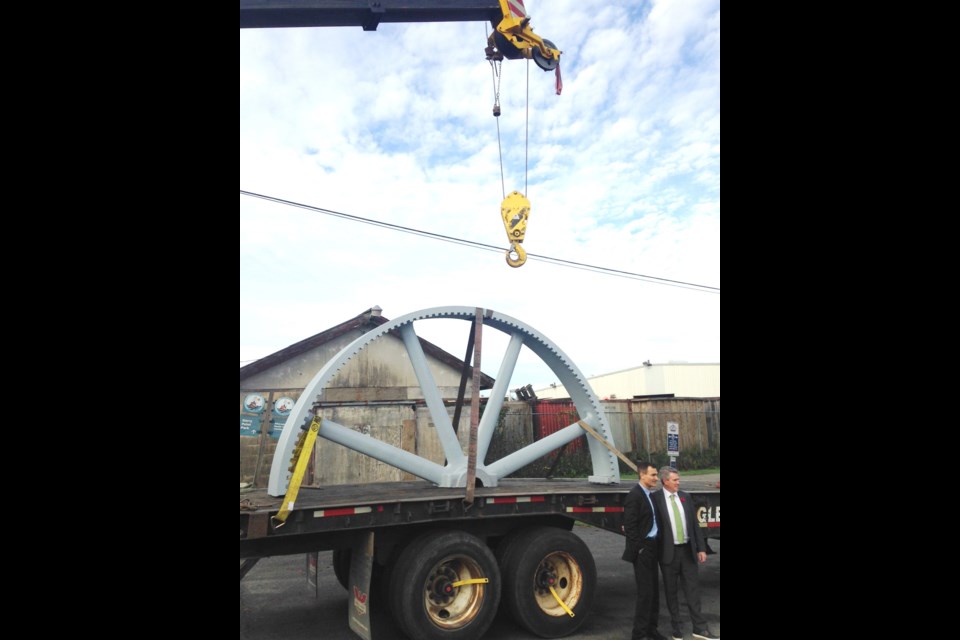The Gulf of Georgia Cannery in Steveston is getting a small share of $38 million in Parks Canada funding for a host of building repairs, artifact restoration and updates to safety systems.
A trio of MPs, including Steveston-Richmond East’s Joe Peschisolido, were at the historic cannery last Thursday to announce the funding, which will go towards the long-term preservation of the historic structure and will include areas such as roof repairs, window replacement and upgrades to fire suppression, ventilation and water systems.
About $4 million is being directed to five projects at the cannery, one of which has already been completed.
“We did the building envelope, which included re-facing about half the cannery, removal of lead paint and re-painting, asbestos panels were removed and replaced and heritage windows were also restored last year,” explained Rebecca Clarke, executive director of the Gulf of Georgia Cannery Society.
About $1 million, said Clarke, was used to restore all the metal items at the cannery that needed attention, which included the blasting and re-painting of a giant, 6,500-pound half-wheel – or flywheel – from an old, industrial ice-making machine from the ‘50s.
“It originally came from the home plant of Vancouver-based Canfisco about 20 years ago,” said Clarke.
“It was used as part of ice-making in Vancouver in the post-war era; the ice was shipped to Steveston where the fish were being stored before being shipped out, rather than canned by that time.
“It’s been gathering rust in a temporary outdoor shelter (with no funding to restore it) and has now been restored and re-painted to its original colour. Last week, a crane hoisted it onto a truck and it was moved to a more prominent location at the cannery; on the north-east side of our site.”
The top half of the flywheel (the other half would have been below floor level), explained Clarke, was part of a Triumph Ice Machine and was connected to an engine via hemp rope.
“The machine acted like a compressor to make 300-pound blocks of ice. The machine is over 100 years old and was used…from 1910 to 1970,” she said.

Another half a million dollars of the federal funding is going towards upgrading the cannery’s fire suppression system.
“We’re also looking at re-doing the landscaping outside the cannery and introducing more interpretive pieces (near the entrance),” she added.
The administration building on the north side of the cannery will also receive some seismic upgrading as part of the renovations.
As well as the cannery, Fort Rodd Hill near Victoria and Fort Langley national historic sites also received funding connected to visitor experiences and safety.
Along with Peschisolido, Jonathan Wilkinson, MP for North Vancouver and Parliamentary Secretary for the Minister of the Environment and Climate Change, was at the cannery to make the funding announcement on behalf of the Minister of Environment and Climate Change and Minister responsible for Parks Canada, Catherine McKenna.
The majority of the funding — $17.7 million — is being invested in a new biking and walking trail in Pacific Rim National Park Reserve.
“The Government is committed to preserving our national parks and historic sites, while enabling more Canadians to experience the outdoors and learn about our environment and heritage,” Wilkinson said in a press release.
Built in 1894, the cannery was one of the largest of its time and was known as the “Monster Cannery.”
Today, it is the last among more than 15 canneries that occupied cannery row on the Steveston waterfront, offering exhibits that showcase the history of Canada’s West Coast fishing industry.



